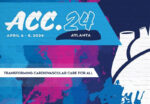For years, treating dyslipidemia mainly focused on reducing LDL cholesterol (LDL-C) with statins, which had shown benefits in reducing atherosclerotic cardiovascular disease (ASCVD). Lipoprotein(a) [Lp(a)] is a form of apoB-containing lipoprotein bound to a hydrophilic, highly glycosylated protein called apolipoprotein(a) [apo(a)]. Circulating levels of Lp(a) are genetically determined, and are hardly affected by eating habits...
SOLACI@PCR Joint Session at EuroPCR 2024 – See You in Paris on May 14 thru 17
The Latin American Society of Interventional Cardiology will once more say here at EuroPCR 2024, undoubtedly one of the most relevant international meetings in the field. In this context, a joint symposium will be held on Thursday 16 at 14.45 (UTC +2 – Paris time), in room 253. This session will discuss “State of the...
Carotid Endarterectomy vs. Carotid Angioplasty in Symptomatic and Asymptomatic Patients: 30-Day Outcomes
Extracranial carotid artery disease represents 15 to 20% of all strokes. Carotid revascularization plays a role in primary and secondary prevention of cerebrovascular events. Outcomes of two common revascularization strategies, Carotid endarterectomy (CAE) and carotid artery stenting (CAS), have been studied and compared. In recent years, complications associated to CAS have dropped thanks to technical...
Drug-Coated Balloon Angioplasty in Femoropopliteal CTOs: Intraluminal or Subintimal?
Patients with peripheral vascular disease often experience femoropopliteal compromise. It is estimated that approximately 50% of lesions in this area are chronic total occlusions (CTO). Even though success rate has improved for peripheral CTO treatments, long term clinical and technical outcomes have not been fully determined yet. Prior research has looked into stenting outcomes in...
Peripheral Vascular Disease: Our Reality in Latin America, with the LATAM SOLACI Peripheral Registry
On the one hand, chronic peripheral vascular disease is on the rise. On the other, over the past 20 years, percutaneous coronary intervention (PCI) has gained considerable ground thanks to various new devices, replacing surgery as an alternative in most scenarios. Both strategies have shown similar results, but PCI has fewer complications and shorter hospital stays....
ACC 2024 | ORBITA-COSMIC
Coronary sinus reduction (CSR) is a relevant area of study for the treatment of refractory angina, with hopes of improving myocardial perfusion. However, to date, there are no conclusive data. The ORBITA-COSMIC study is a randomized, double-blind, placebo-controlled trial conducted at six centers in the UK. Researchers recruited patients with angina and chronic ischemia who...
ACC 2024 | DanGer-Shock Trial
Cardiogenic shock will develop in approximately 10% of patients with ST elevated acute MI (STEMI), and unfortunately, only half of these patients will survive. Researchers have been looking into the Impella system to manage this severe complication. It consists of an aortic transvalvular pump designed to deliver blood from the left ventricle into the systemic...
ACC 2024 | ULTIMATE-DAPT Trial
The international guidelines recommend the use of dual antiplatelet therapy (DAPT) with aspirin plus a P2Y12 inhibitor during 12 months in patients receiving percutaneous coronary intervention (PCI) for acute coronary syndrome (ACS), to prevent events such as MI and stent thrombosis. This was a multicenter, placebo controlled, double blind study to determine whether ticagrelor alone,...
Lithotripsy in the “Real World”: REPLICA EPIC-18 Study
Severe persistent calcification of the coronary arteries has been associated with different factors, such as advanced age, hypertension, dyslipidemia, smoking, and kidney failure, among others, and continues to be one of the challenges to stent implantation because of it impact on device advancing, drug release and adequate positioning. Intravascular lithotripsy (IVL) is a technique that...
Virtual Flow Reserve (VFR): Virtual Physiological Test with OCT
Assessing intermediate coronary lesions with intracoronary physiology tests such as fractional flow reserve (FFR) or other non-hyperemic indices is considered the standard of care by both American and European societies. Likewise, intravascular imaging techniques (IVI), be it IVUS or optical coherence tomography (OCT), are of great use in assessing and guiding complex coronary lesions and...







